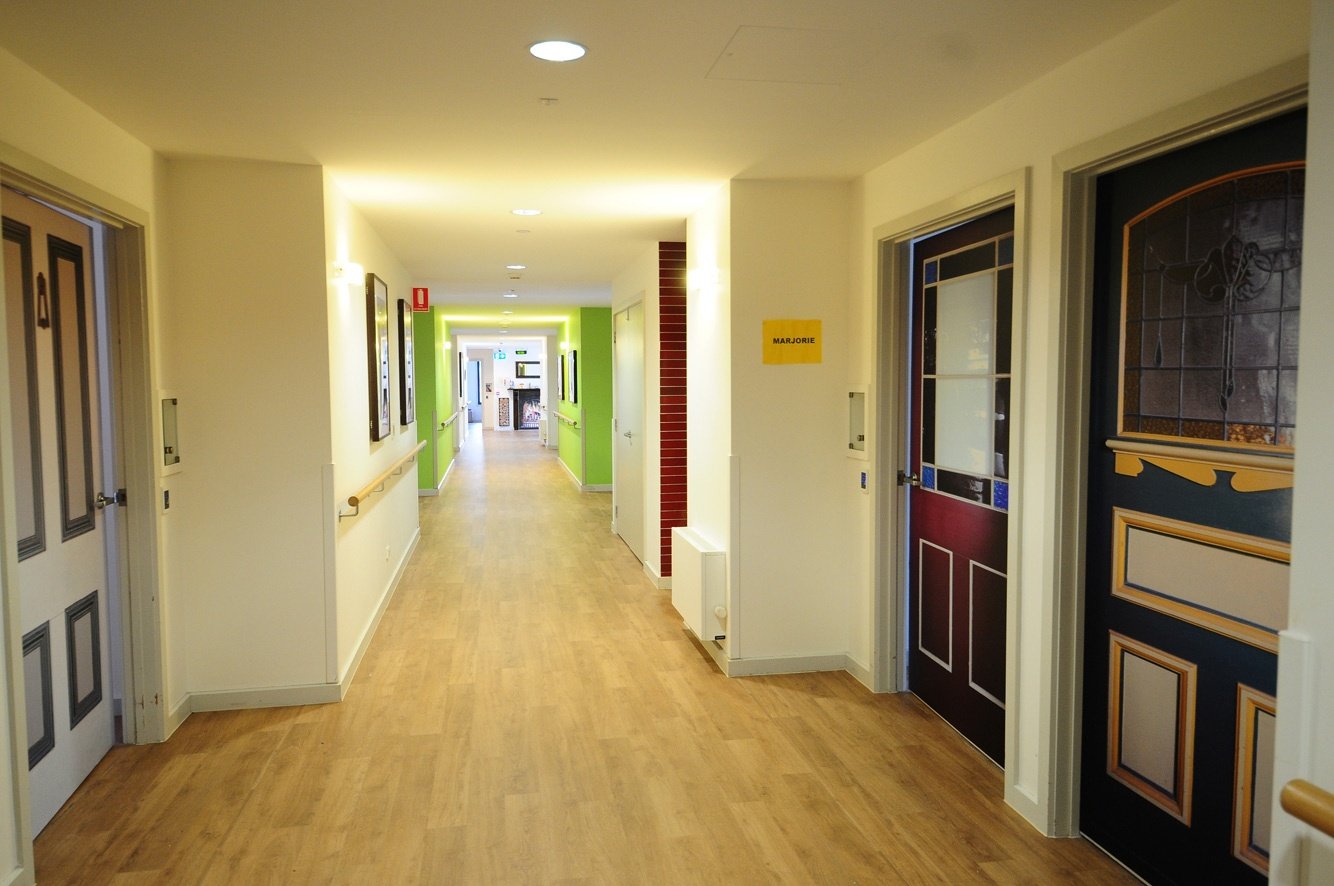Dementia Design
Dementia design plays a crucial role in improving the quality of care for people with dementia.
The physical environment can greatly influence a person’s behavior, mood, and ability to engage in everyday activities. Dementia-friendly environments reduce confusion and disorientation by providing clear visual cues, familiar settings, and appropriate lighting and colors.
This helps individuals maintain their cognitive functions, reduce anxiety, and prevent accidents.
Key benefits of dementia-specific design include:
-
Enhanced Independence
-
Safety and risk reduction
-
Support for social interaction
-
Well-being and engagement

True Doors intersect many areas that dementia design and care planning aim to support. They are an important element of dementia design because they provide a personalized and familiar feature that helps residents feel more at home. True Doors are beneficial in dementia design as they:
-
Create a sense of sense of home and belonging
-
Improve orientation and wayfinding
-
Provide emotional and cognitive benefits
-
Social and emotional engagement
The household model of care
The household model of care is an approach to dementia care that focuses on creating a small, home-like environment within care facilities.
Privacy and safety
Ensuring privacy and sense of safety are critical components as they directly impact the dignity, well-being, and quality of life of individuals living with dementia.
Feel at home
Creating a home-like environment for seniors while energizing staff with a beautiful workplace is essential for enhancing the quality of life and work satisfaction in dementia care settings.


